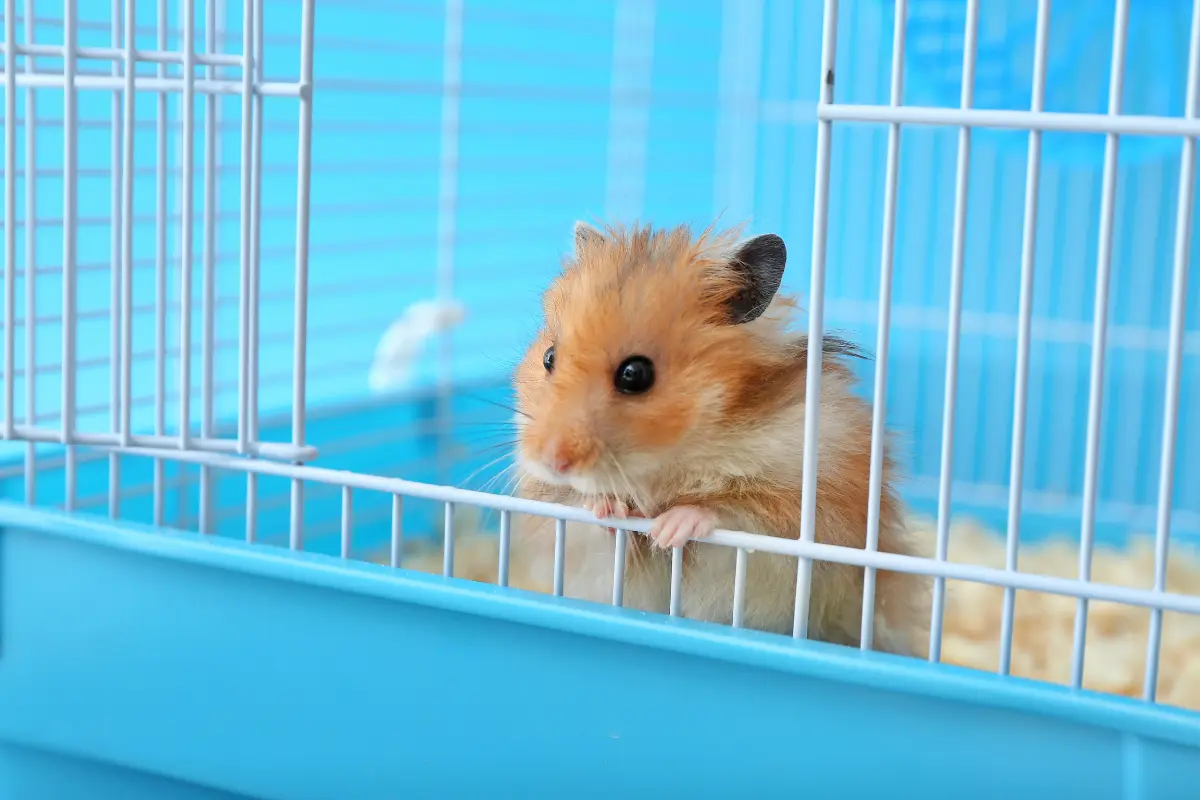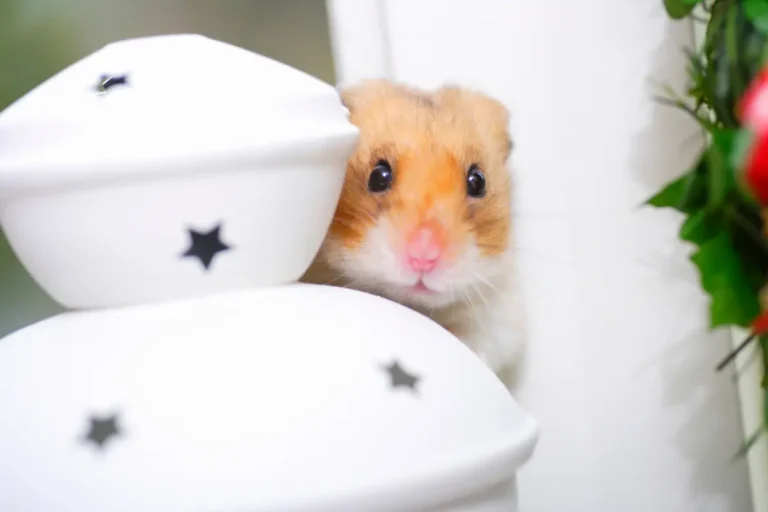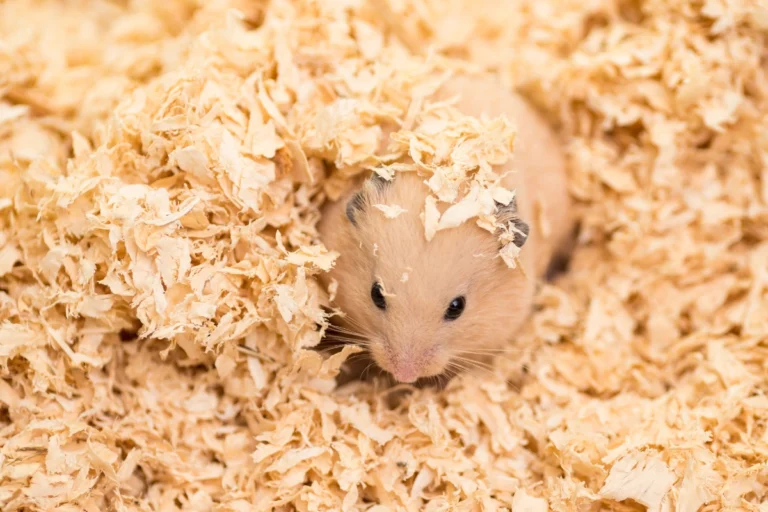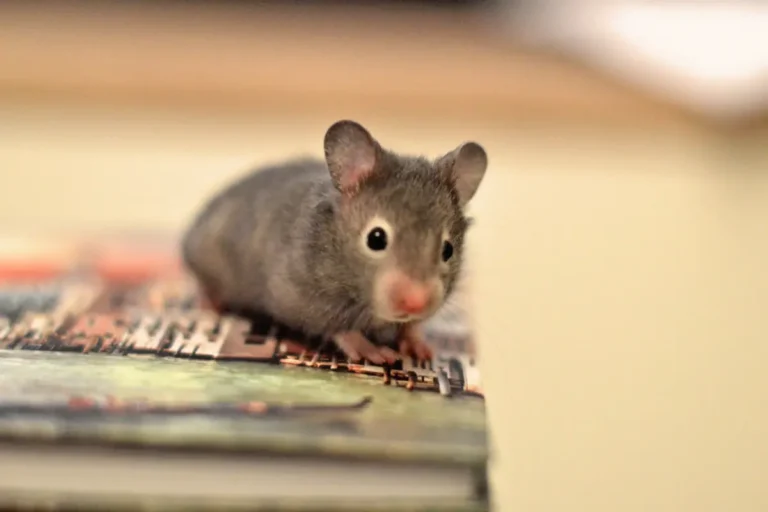How Small Can a Hamster Cage Be in Inches?
Choosing the right cage size for your hamster is more than just a matter of space; it directly impacts your pet’s happiness and health. While hamsters may be small, their need for room to explore, burrow, and play is surprisingly large.
So, how small can a hamster cage actually be while still supporting a healthy lifestyle? Let’s explore the details.
Minimum Cage Size for Hamsters
The minimum cage size for a hamster is crucial for ensuring their physical and mental well-being. Here are the most widely recommended minimum cage dimensions for various hamster species:
General Minimum Cage Size Recommendation
- 450 square inches of floor space is typically considered the minimum by animal welfare organizations and hamster care experts. This size allows enough room for essential items like an exercise wheel, hideouts, toys, and bedding for burrowing, all of which contribute to a hamster’s happiness and health.
Why This Minimum Size Matters
A cage smaller than these recommended sizes can restrict a hamster’s movement and lead to stress, boredom, and unhealthy behaviors like bar-biting and repetitive pacing.
Larger cages allow hamsters to engage in natural behaviors, improving both their physical health and mental stimulation.
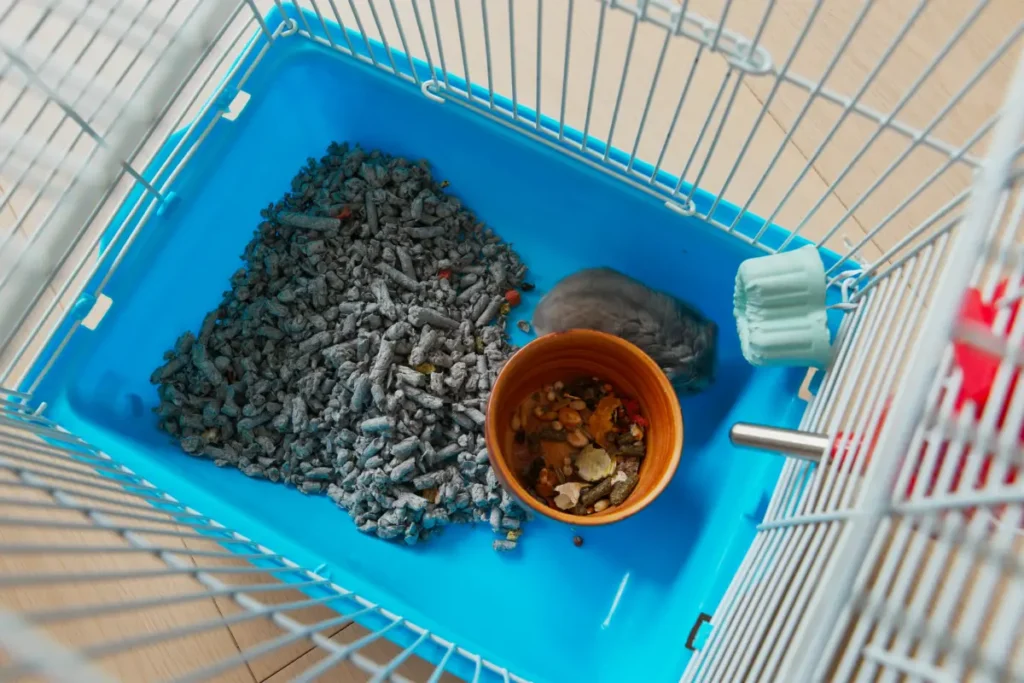
Species-Specific Minimum Size Recommendations
Different hamster species have varying needs regarding cage size, primarily due to differences in size and activity levels.
1. Dwarf Hamsters (Roborovski, Campbell’s, and Winter White)
- Minimum Size: 24 inches by 18 inches (432 square inches).
- Ideal Size: 600 square inches or larger.
- Reasoning: Although dwarf hamsters are small, they are very active and enjoy exploring. A minimum of 432 square inches provides enough room for exercise and accessories like wheels, tunnels, and hideouts, while the ideal 600 square inches allows for optimal enrichment.
2. Syrian Hamsters
- Minimum Size: 30 inches by 20 inches (600 square inches).
- Ideal Size: 700 square inches or larger.
- Reasoning: Syrian hamsters are larger and require more space to accommodate their size and active nature. A minimum of 600 square inches allows for a sufficiently sized wheel (8–12 inches) and other enrichment items, while 700+ square inches provides extra room for exploration and mental stimulation.
3. Chinese Hamsters
- Minimum Size: 24 inches by 18 inches (432 square inches).
- Ideal Size: 600 square inches or larger.
- Reasoning: Chinese hamsters, although small, enjoy climbing and digging. A cage that meets or exceeds 432 square inches allows them space to explore and engage in these behaviors comfortably, while a larger space provides more options for vertical climbing accessories and digging areas.
Summary of Example Dimensions by Species
| Species | Minimum Example | Ideal Example |
|---|---|---|
| Dwarf Hamsters | 24” x 18” (432 sq in) | 30” x 20” (600 sq in) |
| Syrian Hamsters | 30” x 20” (600 sq in) | 40” x 20” (800 sq in) |
| Chinese Hamsters | 24” x 18” (432 sq in) | 36” x 18” (648 sq in) |
The best cage dimensions will depend on the hamster species, but generally, aim for a minimum of 450 square inches, with 600 square inches or more being ideal for most hamsters.
Custom or DIY Cages
For owners interested in building their own enclosure, many find 32 inches by 20 inches (640 square inches) or larger to be a comfortable starting point.
Custom or DIY cages made from plastic bins, glass aquariums, or wood can meet the hamster’s specific needs while offering a more affordable or customizable setup.
Considerations Beyond Floor Space
While providing adequate floor space is essential for a hamster’s well-being, several other factors significantly contribute to their overall health and happiness.
1. Cage Height and Substrate Depth
Height: A minimum cage height of 12 inches is recommended to accommodate accessories like exercise wheels and to allow hamsters to stand on their hind legs without restriction.
Substrate Depth: Hamsters are natural burrowers. Providing a deep layer of bedding (at least 6 inches) enables them to dig and create tunnels, promoting natural behaviors and reducing stress.
2. Escape-Proof Design
Hamsters are skilled escape artists, so cages need to be escape-proof, especially if they contain tubes or attachments.
For wire cages, ensure the bars are spaced closely (no wider than 0.25 inches) to prevent smaller hamsters, particularly dwarf varieties, from squeezing through.

3. Size and Type of Wheel
For Syrian hamsters, choose a wheel that is at least 8–12 inches in diameter to prevent back strain; dwarf hamsters typically need a 6.5–8 inch wheel.
Consider silent wheels, as they reduce noise, which can be beneficial if the cage is in a shared living area.
Multi-Level Cages: Do They Count?
Multi-level cages can seem like an attractive option because they add vertical space, giving the illusion of a larger area. However, they don’t fully substitute for the horizontal floor space that hamsters need to roam and engage in natural behaviors. Here’s why:
- Importance of Floor Space:
Hamsters are ground-dwelling animals, naturally adapted to explore and forage on flat surfaces rather than climb. Therefore, the recommended minimum cage size (450 square inches of floor space) refers specifically to horizontal area.
Multi-levels can’t replace this horizontal space, as hamsters still need a large, continuous floor to run around freely.
- Exercise Wheels and Accessories:
Large exercise wheels are essential and require a flat space to prevent the wheel from taking up valuable horizontal area.
Similarly, toys, tunnels, and hides are best placed on a wide single level to keep the hamster’s layout spacious and safe.
- Risk of Falls:
Hamsters, especially Syrians, are not the best climbers, and adding multiple levels or platforms increases the risk of falls and injuries.
Dwarf hamsters may navigate levels better, but it’s essential to ensure that each level is close to the previous one to prevent any harmful drops.
Benefits of Multi-Levels:
While multi-levels can’t be counted as part of the primary cage size requirement, they can still add value by providing:
- Varied Enrichment: Different levels encourage climbing and can help hamsters engage in natural behaviors.
- Additional Areas for Rest and Play: Multi-level cages can offer separate areas for sleeping, playing, and hiding, giving hamsters some variety within their enclosure.
In summary, multi-level cages can enhance a hamster’s environment but should be seen as an addition rather than a replacement for adequate single-level floor space.
Always ensure the primary level meets the minimum size requirements and think of any additional levels as bonus enrichment.
Recommended Cage Sizes by Popular Types
When selecting a cage for your hamster, it’s crucial to ensure it meets the recommended minimum size to promote your pet’s health and well-being. Below are common types of hamster enclosures along with their typical dimensions and suitability:
1. Wire-Top Cages:
These cages feature a plastic base with an overarching wire structure, often including multiple levels connected by tubes or ladders.
- Typical Dimensions: Many commercially available wire-top cages measure around 18 inches in length and 12 inches in width, providing approximately 216 square inches of floor space.
- Suitability: These dimensions fall short of the recommended minimum of 450 square inches. Therefore, standard wire-top cages are generally unsuitable for hamsters, as they do not provide adequate space for exercise and enrichment.
2. Plastic Tank Cages:
Plastic tank cages range from simple boxes to elaborate structures with tunnels and separate rooms, designed to encourage exploration.
- Typical Dimensions: Sizes vary, but many are similar to wire-top cages, offering limited floor space.
- Suitability: Like wire-top cages, standard plastic tank cages often do not meet the minimum size requirements, making them unsuitable for hamsters.
3. Bin Cages:
Constructed from large plastic storage bins, these DIY cages are customizable and can provide ample space.
- Recommended Dimensions: A bin measuring approximately 32 inches in length and 20 inches in width offers 640 square inches of floor space, exceeding the minimum recommendation.
- Suitability: When properly ventilated and secured, bin cages are an excellent and affordable option for housing hamsters.
4. Aquariums:
Glass aquariums can be adapted for hamster housing, offering clear visibility and a contained environment.
- Recommended Size: A 40-gallon breeder tank, measuring about 36 inches by 18 inches, provides 648 square inches of floor space, meeting the recommended minimum.
- Suitability: Aquariums of this size are suitable for hamsters, provided they have a secure mesh lid for ventilation.
5. Wooden Cages:
Custom-built wooden enclosures can be designed to meet specific size requirements and aesthetic preferences.
- Recommended Dimensions: Ensuring a floor space of at least 450 square inches is essential.
- Suitability: When constructed with safe materials and proper ventilation, wooden cages can be suitable. However, they require more maintenance to prevent odor buildup and chewing damage.
Many commercially available cages do not meet the minimum size requirements for hamsters. Opting for larger enclosures, such as appropriately sized bin cages or aquariums, is recommended to ensure your hamster has sufficient space to thrive.
Why Smaller Cages Are Still on the Market
Many pet stores still offer small cages, some as small as 10 x 12 inches (120 square inches), which are unsuitable for hamsters.
These cages are often marketed for their compact size and affordability, making them appealing to first-time hamster owners unaware of their pets’ needs.
However, it’s essential to recognize that meeting your hamster’s needs may require spending more initially on an appropriate cage. Larger cages provide long-term benefits in terms of pet well-being and satisfaction, reducing stress-related behaviors and health issues.
